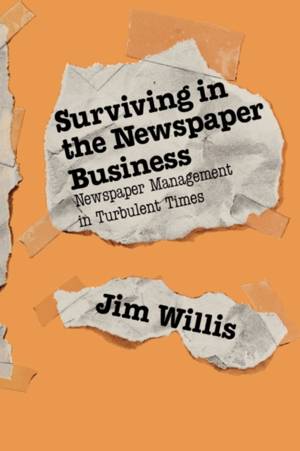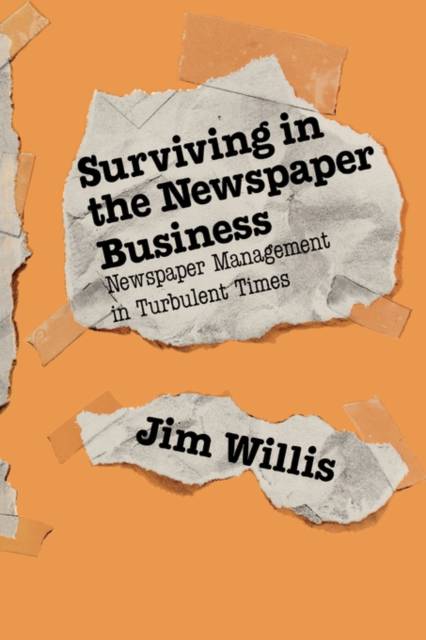
- Retrait gratuit dans votre magasin Club
- 7.000.000 titres dans notre catalogue
- Payer en toute sécurité
- Toujours un magasin près de chez vous
- Retrait gratuit dans votre magasin Club
- 7.000.000 titres dans notre catalogue
- Payer en toute sécurité
- Toujours un magasin près de chez vous
Surviving in the Newspaper Business
Newspaper Management in Turbulent Times
William James Willis, Jim WillisDescription
Willis' almost total textbook analysis of today's newspaper makes Surviving in the Newspaper Business precisely what it claims to be: `A how-to guide to newspaper management in the 1980s and beyond . . . a set of unified principles for successful management.' It explains the supervision and organization of each department and stresses the importance of keeping the paper responsive to the needs of its readers, advertisers and, somewhat surprisingly, even its employees. Willis talks about advertising, circulation and marketing strategies and how to deal with competition from TV, the suburban weeklies and labor unions. He looks at `the editor as a people manager, ' something that more than one tradition-bound editor has been unable to do for himself. The book has sample budgets and organizational charts and even a discussion of the relative merits of adult vs. youth carriers. Newspaper Research Journal
Professor Jim Willis' book is a nicely condensed overview of the newspaper as a business. Though it is aimed at journalism students enrolled in newspaper management classes, it is also worthwhile reading for the curious reporter or copy editor who knows little about how newspapers make and spend money. . . . The book is sprinkled with good, common sense about balancing newspapers as a business against newspapering as good journalism. Professor Willis makes a gallant attempt to make sure students understand that though the newspaper must make a profit to survive, it will never truly excel unless it produces a good news-editorial product. ASNE Bulletin Surviving in the Newspaper Business is a how-to-do-it guide to newspaper management for the 1980s and beyond. It presents a set of unified principles for successful management and exposes the student to the primary mission of the newspaper: to deliver a quality product to the depth and breadth of the marketplace. Stressing the importance of the total newspaper concept, Willis portrays the successful newspaper as integrated internally among departments and externally with its readership and advertisers. In addition, he analyzes the newspaper's industrial environment, discusses management survival strategies, considers business and finance plans, and assesses organizational behavior in the newsroom. Included are a series of hands-on case studies offering further insights into topics discussed.Spécifications
Parties prenantes
- Auteur(s) :
- Editeur:
Contenu
- Nombre de pages :
- 230
- Langue:
- Anglais
Caractéristiques
- EAN:
- 9780275928636
- Date de parution :
- 12-07-88
- Format:
- Livre broché
- Format numérique:
- Trade paperback (VS)
- Dimensions :
- 156 mm x 234 mm
- Poids :
- 326 g







